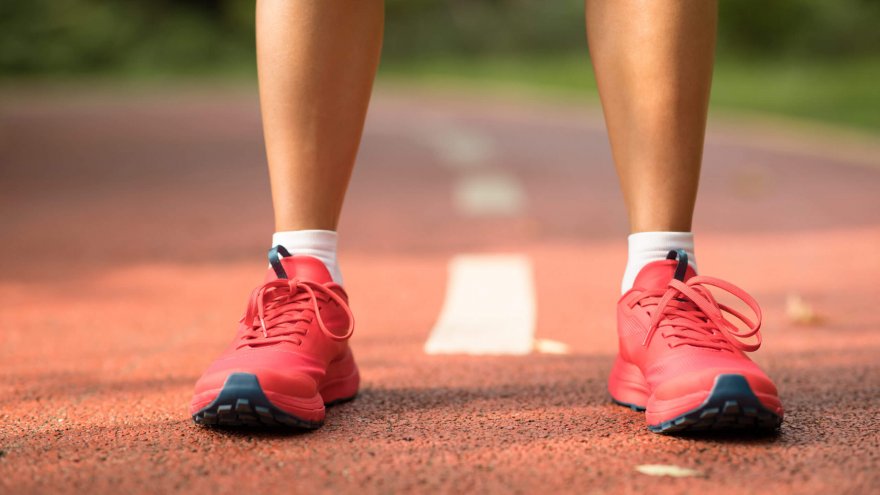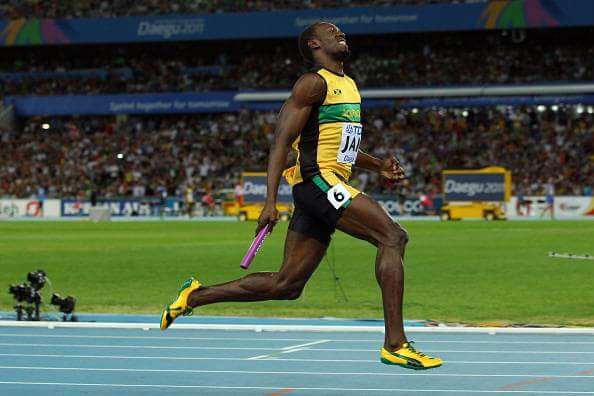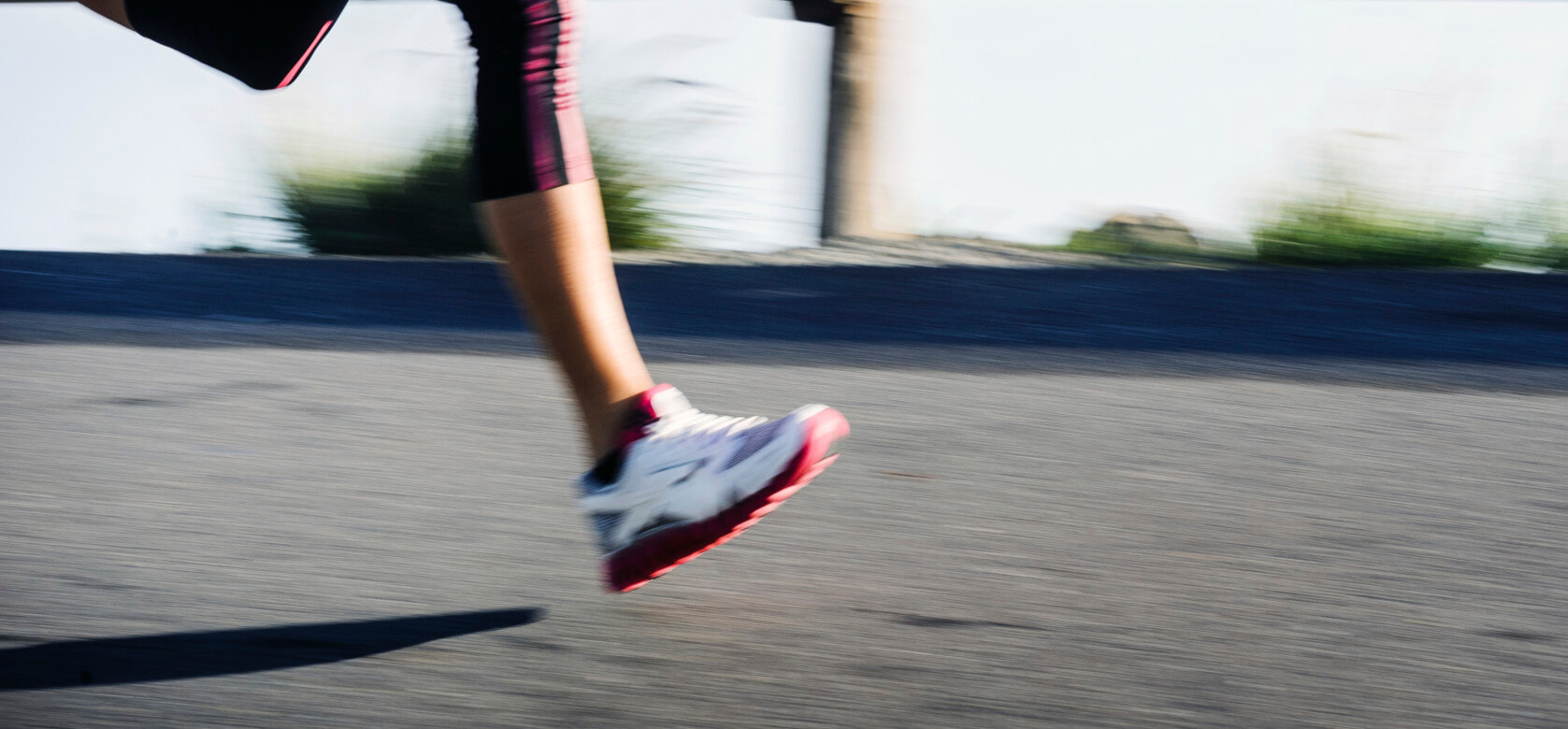Is Forefoot Running More Efficient?

As a runner, have you ever thought to contemplate how your foot hits the ground? With each step you take, your foot first strikes in one of three areas. Some runners are heel strikers. This means that the back of their foot hits the ground first and the runner’s entire foot rolls forward as it contacts the ground.
The next extreme is forefoot running. Those with a forefoot strike, hit at the front of the foot first. For some people, the heel of the foot may barely even contact the ground (if at all).
Then there are the runners whose foot strikes somewhere in the middle. Midfoot strikers have the first impact in the middle of the foot. What this often means is that your heel and forefoot both are hitting simultaneously, with the majority of the weight on the center of the foot.
Is There A Faster Foot Strike?
If you are analyzing foot strike as it is relational to speed, you will find some general schools of thought but also some anomalies. On the one hand, if you watch sprinters, you will see they do all of their best work up on their toes. Check out the great Olympic sprinters such as Usain Bolt, Tyson Gay and Tamari Davis.

Taking that information in a vacuum, you might assume that the best way to run is to forefoot strike. However, Eliud Kipchoge, the only man to break the two hour barrier in the marathon, is a heel striker. Marathoning great Mo Farah, on the other hand, is a mid-foot striker.
If you are even more confused than before, you’re in good company.
Does Forefoot Running Make You Faster?
It is not likely that forefoot striking will make you faster. What I mean is, if everything else remains the same, switching your foot strike probably won’t have much of an impact on your speed.
However, there are many proponents of a more natural foot strike that think transitioning to a forefoot strike will help you perform better because you will be less prone to injuries.
Is Forefoot Running Bad?
Striking on the front of your foot is positive in some very specific ways. First, it sets your body up to absorb impact much better than other types of foot strike.
In a traditional heel strike, you are actually putting on the brakes in essence. This is another reason why many people favor the idea of a forefoot strike.

On the other hand, a forefoot strike can also put some additional strain on the runners’ calves and Achilles. This is especially true if you have not been running this way your whole life.
For this reason, if you choose to transition to forefoot running, you need to do it gradually.
How Do I Switch To Forefoot Running?
If you are looking to make the transition to forefoot running, there are some specific things you should consider.
First things first. Don’t think that this will happen overnight. Changing your foot strike is a gradual process and you need to approach the transition with patience, diligence and deliberation.
Second, take it low and slow in the beginning. In other words, no matter what kind of a running base you have or how fast you are, start out with low mileage at a super easy pace. In fact, consider starting in summer and head to the beach.
Why the beach, you ask? One of the most natural things in the world is to run joyfully through the sand and most people find themselves up on their toes when they do so. If you are looking to start running differently, this may be the perfect place to begin.
As you get the hang of running barefoot (did I mention you should be barefoot?) on the sand, you can consider one of two things. You can either run a little longer or further on the sand or you can transition to soft grass. Many athletes find that running on grass, also barefoot, is another good way to get ready to forefoot run.
As you begin to run further and looking at harder surfaces for running, you may wish to invest in a pair of minimalist shoes. Many of us have motion control, cushion and/or stability shoes in our arsenal of running equipment. These types of shoes are not conducive to forefoot running.
Purchase yourself a pair of racing flats or minimalist shoes for these transition runs. Just remember, you can’t just throw on a pair of low support shoes and pop out 10 miles if you have not done that before. Just like everything else we have described here, this transition needs to be slow and deliberate.
How Do Runners Avoid Heel Strike?
Proponents of the minimalist running movement would say the first thing to do is to throw away those clunky shoes with all of the control over them. Shoes that keep your foot from moving naturally will cause you to be more likely to heel strike.

If you are wearing a very flexible shoe, you are more likely to have your foot roll with the natural movements it is inclined to do.
Next, you can practice doing some running drills. Incorporating drills into your regular warm up and workout regiment is one of the best ways to ensure you are using good form.
Do I Need to Change My Foot Strike?
Do you need to? Maybe you would benefit from a change, but few people actually need to. As you question if you should, ask yourself some questions.
Are you prone to injury? If you repeatedly get injuries, perhaps you should consider changing things about how you run.
Are you uncomfortable when you run? What I mean is, not necessarily a nagging injury, but do you get a common discomfort after longer runs? This could be your body trying to tell you something. It could be that your shoes are worn out. It could be that you are using either too much or not enough support.
Sometimes people realize they are not running efficiently. For those people, they are looking to hone in on mechanics to perfect their craft. This is admirable and excellent use of time and talent.
What it comes down to is, runners come in all shapes, sizes and running styles. Could modifying your stride, strike and form some help you be a faster runner? You bet. It is also true that working on these things could potentially help you prevent injury. However, for most people, it isn’t magic.
Latest Articles
 Is Running on a Treadmill Easier Than Running Outside?Runners have their own preferences, whether it is treadmill running, running outside on the road, or exploring trails. So...
Is Running on a Treadmill Easier Than Running Outside?Runners have their own preferences, whether it is treadmill running, running outside on the road, or exploring trails. So... Is It OK to Use Trail Running Shoes on the Road?While trail running shoes can be used on roads, especially in situations where a runner encounters mixed terrains or pref...
Is It OK to Use Trail Running Shoes on the Road?While trail running shoes can be used on roads, especially in situations where a runner encounters mixed terrains or pref... How to Fix Sore Quads After Running?Rest, ice, gentle stretching, and over-the-counter pain relievers can help soothe sore quads after running. Also, ensure ...
How to Fix Sore Quads After Running?Rest, ice, gentle stretching, and over-the-counter pain relievers can help soothe sore quads after running. Also, ensure ... 10 Fruits With The Most Electrolytes to Replace Sports DrinksThese fruits are high in electrolytes such as potassium, magnesium, and calcium, essential for hydration, muscle function...
10 Fruits With The Most Electrolytes to Replace Sports DrinksThese fruits are high in electrolytes such as potassium, magnesium, and calcium, essential for hydration, muscle function...

